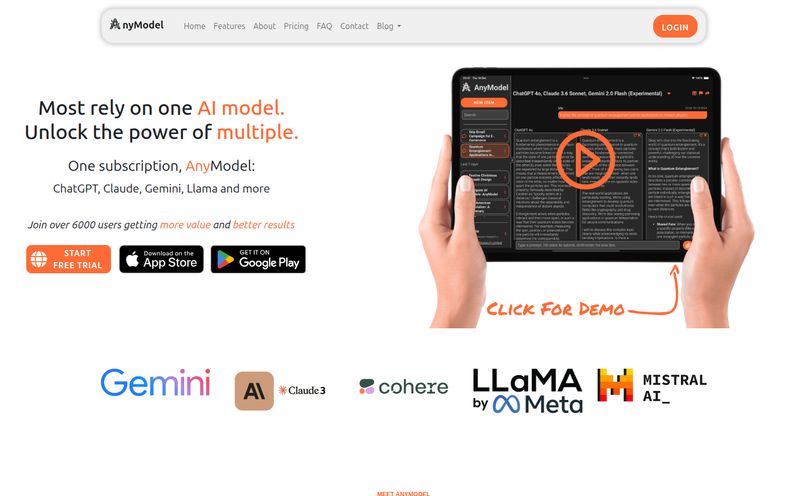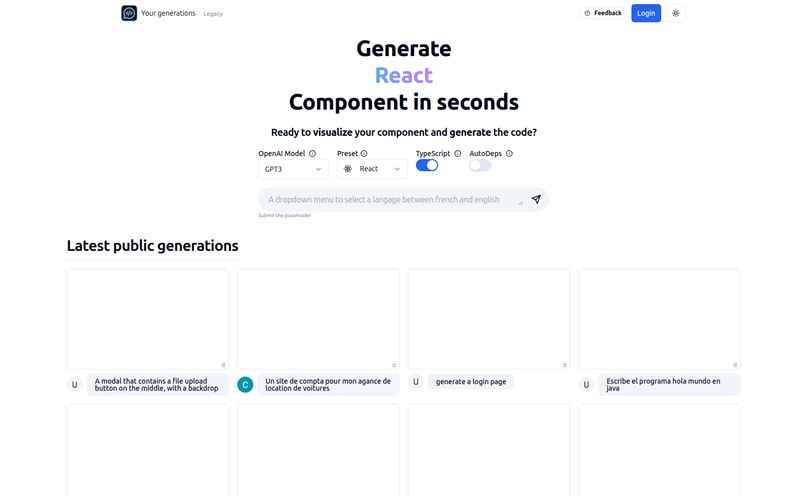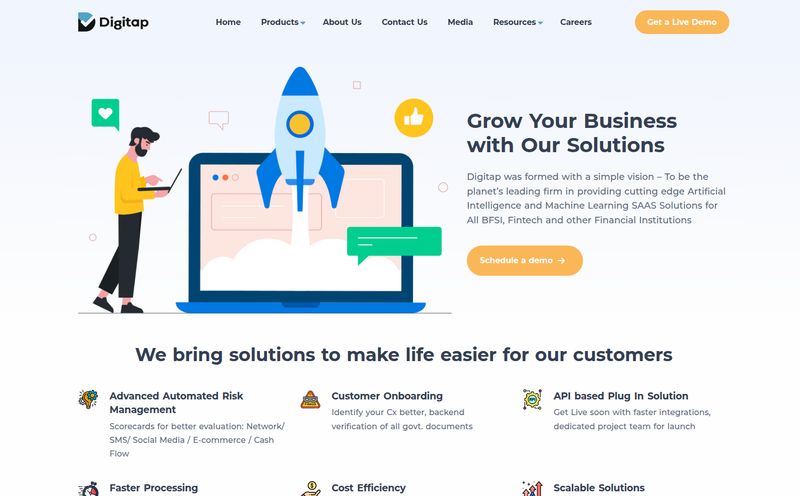If you’ve been in the SaaS or product world for more than a minute, you’ve felt the data headache. You’ve got all this incredible data, a goldmine of insights, but getting it in front of your customers—or even your own internal teams—can feel like a wrestling match. You try to wrangle a tool like Power BI or Tableau to embed dashboards into your app, and suddenly you're dealing with iframe nightmares, unpredictable costs, and an interface that looks like it was designed in 2005.
Sound familiar? I’ve seen it a dozen times. Companies spend a fortune on engineering resources just to build and maintain a clunky, bolted-on analytics experience. It’s the classic square-peg-round-hole problem. So, when a tool like DataBrain comes across my desk, I’m naturally skeptical but also… hopeful. Could this be the one? The platform that actually gets customer-facing analytics? Let's take a look.
So, What Exactly is DataBrain?
In a nutshell, DataBrain is an embedded analytics platform. Think of it less as a standalone BI tool and more as a powerful analytics engine that’s designed to live inside your own product. It gives you all the building blocks—SDKs, APIs, and slick UI kits—to create beautiful, interactive dashboards and reports that feel like a native part of your application. No more janky iframes or sending your customers to a different URL to see their data.

Visit DataBrain
The whole point is to enable self-service BI. You give your customers the power to explore their own data, filter reports, and find their own answers, all without having to bug your support team. For your internal teams, it means product managers and non-technical folks can get insights without needing to know SQL or wait for the data team to run a query. It’s all about making data accessible, and I’m here for it.
The Pain Point DataBrain Is Trying to Solve
I saw a testimonial on their site from a guy named Evan at a company called Diviso. He mentioned struggling with Power BI’s embedding issues and unpredictable costs, and that DataBrain saved them $100k and six months of work. And honestly? That tracks.
The big BI players are incredibly powerful, don't get me wrong. But they were built for internal analysts, not for being white-labeled and embedded into a customer-facing app. It’s often an afterthought for them. This leads to all sorts of problems:
- Clunky User Experience: The embedded dashboards often feel slow, look out of place, and lack the customization needed to match your brand.
- Complex Licensing: Trying to figure out per-user costs for your entire customer base can be a nightmare. The pricing models just aren't built for external use.
- Heavy Engineering Lift: Your developers end up spending more time fighting with the BI tool's API than they do building your actual product.
DataBrain seems to have been built from the ground up to tackle this specific problem. It’s not trying to be everything to everyone; it's focused on being the best at embedded, customer-facing analytics. A specialist in a world of generalists.
Breaking Down The Core Features
Okay, let's get into the good stuff. What does it actually do? Beyond the buzzwords, a few things stood out to me.
The Low-Code Dashboard Builder
This is a big one. DataBrain boasts a low-to-no-code interface for creating dashboards. This is huge for democratizing data. It means your product manager, or even a sharp customer success rep, can build or tweak a report without having to file a ticket with the engineering department. This speeds up everything. When you can build, test, and deploy a new metric for your customers in hours instead of weeks, you've got a serious competitive advantage.
AI That Doesn't Feel Like a Gimmick
I know, I know. Every company on earth is adding "AI-powered" to their marketing copy. Most of the time, it's just a thin wrapper around a GPT API. DataBrain's approach seems a bit more thoughtful. They talk about generative AI insights and a natural language interface for querying data. The idea is that a user could literally ask, "What were my top-selling products in the Northeast last quarter?" and get an answer. If this works as well as they claim, it could completely change how non-technical users interact with data. It lowers the barrier to entry to almost zero.
Built for Developers, Too
While the front-end is user-friendly, the back-end seems robust. With flexible SDKs and APIs, your developers aren't locked into a rigid system. They can customize components, control the data flow, and integrate things tightly with your existing app and security protocols. It’s this combination of user-friendliness for business users and flexibility for developers that often separates a good tool from a great one.
Let's Talk About the Price Tag
This is where the rubber meets the road. DataBrain isn't a cheap hobbyist tool, and it's not trying to be. It's priced for businesses who see customer-facing analytics as a core part of their product offering. Looking at their pricing page, here's my take:
| Plan | Price | Who It's For |
|---|---|---|
| Growth | $999 / month | Ideal for startups or companies just dipping their toes into embedded analytics. The unlimited seats and embeds are huge, but the 1 data source limit is the main constraint. A great replacement for open-source tools like Metabase or Superset where you're tired of the maintenance overhead. |
| Pro | $1,995 / month | This is for fast-growing companies where data is coming from multiple places (your app's database, a CRM, a data warehouse, etc.). The unlimited data sources, SSO, and user permissions make it a serious contender. They position it as a Looker replacement, which is a bold claim, but for the specific use case of embedding, I can see it. |
| Enterprise | Custom (Talk to Sales) | The big leagues. For companies with serious security, compliance, and scale requirements. The self-hosting option is a massive deal for finance or healthcare tech. This is for teams who are looking to migrate off of expensive and cumbersome contracts with Tableau, PowerBI, or Sisense. |
Yes, the prices might cause a bit of sticker shock at first. But you have to do teh math. How much does an engineer's salary cost? How much time are they spending right now on BI issues? When you compare it to the cost of building and maintaining a custom solution, it starts to look a lot more reasonable.
The Good and The Not-So-Good
No tool is perfect. Based on what I've seen, here's my honest breakdown.
On the plus side, the easy integration and flexibility are massive wins. The fact that it's built with SDKs and APIs in mind means it won't feel like a foreign object in your app. The low-code interface is genuinely a powerful feature for empowering your whole team, and the multi-tenant architecture means it's built to scale with your customer base from day one. Enterprise-grade security out of the box is also a huge relief.
On the other hand, let's be real—the price could be a hurdle for early-stage, bootstrapped startups. It's an investment. There might also be a slight learning curve for non-technical users who have never touched a BI tool before, though it seems much gentler than most. Finally, to get the absolute most out of it, you'll likely rely on DataBrain's SDK, which means you're buying into their ecosystem. That's not necessarily a bad thing, but it's a strategic choice you have to make.
So, Who Should Use DataBrain?
In my opinion, DataBrain is a fantastic fit for a few specific groups:
- SaaS Companies: If your product generates data and you want to offer a premium analytics/reporting feature to your customers, this is tailor-made for you.
- Product Managers & Teams: If you want to move faster and give your customers more data-driven features without being bottlenecked by engineering cycles.
- Companies Migrating from Clunky BI: If you're currently fighting with Tableau or Power BI for embedding and you're tired of the battle, this could be your way out.
If you're a solo blogger who just needs to visualize some Google Analytics data, this is overkill. But if you're building a serious application where data is a feature, DataBrain should absolutely be on your shortlist.
Frequently Asked Questions
1. What kind of integrations does DataBrain support?
It's designed to connect to pretty much any modern data source. This includes SQL databases like Postgres and MySQL, data warehouses like Snowflake, BigQuery, and Redshift, and even APIs. The Pro and Enterprise plans offer unlimited data source connections.
2. Do I need to be a developer to use DataBrain?
Not to build or view dashboards. The platform is designed with a no-code interface so business users can create and interact with reports. However, the initial setup and embedding of DataBrain into your application will require a developer's help.
3. How does the AI natural language query actually work?
It uses generative AI models to translate a plain-english question (like "show me sales by region") into a formal database query (SQL). It then runs that query on your connected data and displays the result as a chart or table. It essentially acts as a translator between you and your database.
4. Is DataBrain secure enough for sensitive customer data?
Security seems to be a major focus. The platform supports features like SSO (Single Sign-On), row-level security, and user roles and permissions. For maximum control, the Enterprise plan even offers self-hosting options, meaning the entire platform can run within your own private cloud infrastructure (VPC).
5. Why choose DataBrain over a cheaper option like Metabase or Power BI's basic tier?
It comes down to the use case. Tools like Metabase are fantastic for internal analytics but can be challenging to manage for customer-facing embeds at scale. Power BI is powerful but often becomes expensive and unwieldy when you try to license it for all your external users. DataBrain is a premium, specialized tool built specifically for the embedded use case, aiming to save you money on engineering and operational costs in the long run.
My Final Thoughts
Look, the world of BI and analytics is crowded. There are a million tools out there. But very few of them are laser-focused on solving the embedded analytics problem well. DataBrain appears to be one of those few. It’s not trying to be the next Tableau for massive internal data science teams. It’s trying to be the best way for a software company to put data in the hands of its customers.
It’s an investment, for sure. But if it delivers on its promise of saving engineering time, delighting customers with a seamless experience, and unlocking new revenue streams through data-as-a-feature, it's an investment that could pay for itself many times over. If you're in that boat, I’d say their 14-day trial is definitely worth a spin.



